 UK house prices have been falling in recent months. According to the Nationwide Building Society, average UK house prices in September 2023 were 5.3% lower than in September 2022. This fall reflects the increasing cost of owning a home as mortgage rates have risen. The average standard variable rate mortgage was 3.61% in August 2021, 4.88% in August 2022 and 7.85% in August 2023. A two-year fixed rate mortgage with a 10% deposit had an interest rate of 2.48% in August 2021, 3.93% in August 2022 and 6.59% in August 2023. Thus over two years, mortgage rates have more than doubled. This has made house purchase less affordable and has dampened demand.
UK house prices have been falling in recent months. According to the Nationwide Building Society, average UK house prices in September 2023 were 5.3% lower than in September 2022. This fall reflects the increasing cost of owning a home as mortgage rates have risen. The average standard variable rate mortgage was 3.61% in August 2021, 4.88% in August 2022 and 7.85% in August 2023. A two-year fixed rate mortgage with a 10% deposit had an interest rate of 2.48% in August 2021, 3.93% in August 2022 and 6.59% in August 2023. Thus over two years, mortgage rates have more than doubled. This has made house purchase less affordable and has dampened demand.
But do house prices simply reflect current affordability? Given the large increase in mortgage costs and the cost-of-living crisis, it might seem surprising that house prices have fallen so little. After all, from September 2019 to August 2023, the average UK house price rose by 27.1% (from £215 352 to £273 751). Since then it has fallen by only 5.8% (to £257 808 in September 2023). However, there are various factors that help to explain why house prices have not fallen considerably more.
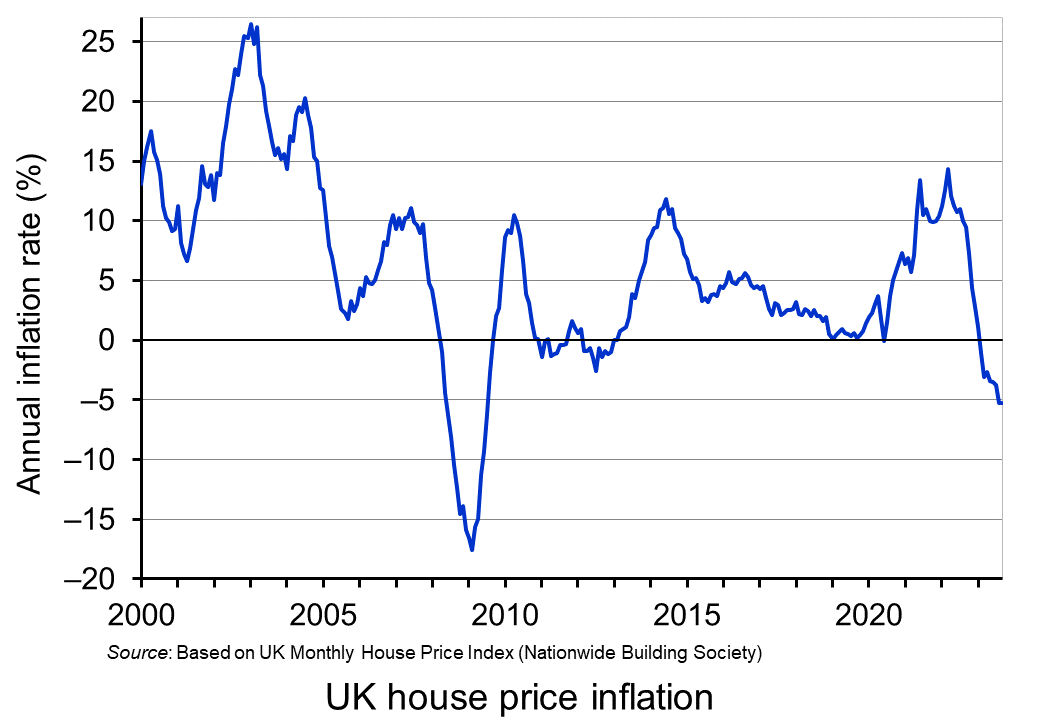 The first is that 74% of borrowers are on fixed-rate mortgages and 96% of new mortgages since 2019 have been at fixed rates. More than half of people with fixed rates have not yet had to renew their mortgage since interest rates began rising in December 2021. These people, therefore, have not yet been affected by the rise in mortgage interest rates.
The first is that 74% of borrowers are on fixed-rate mortgages and 96% of new mortgages since 2019 have been at fixed rates. More than half of people with fixed rates have not yet had to renew their mortgage since interest rates began rising in December 2021. These people, therefore, have not yet been affected by the rise in mortgage interest rates.
The second is that interest rates are expected to peak and then fall. Even though by December 2024 another 2 million households will have had to renew their mortgage, those taking out new longer-term fixed rates may find that rates are lower than those on offer today. This could help to reduce the downward effect on house prices.
The third is that rents continue to rise, partly in response to the higher mortgage rates paid by landlords. With the price of this substitute product rising, this acts as an incentive for existing homeowners not to sell and existing renters to buy, even though they are facing higher mortgage payments.
The fourth is that house prices do not necessarily reflect the overall market equilibrium. People selling may hold out for a better price, hoping that they will eventually attract a buyer. Houses thus are taking longer to sell. This creates a glut of houses at above-equilibrium prices, with fewer sales taking place. At the same time, these higher prices depress demand. People would rather wait for a fall in house prices than pay the current asking price. This creates more of a ‘buyers’ market’, with some sellers being forced to sell well below the asking price. According to Zoopla (see linked article below), the average selling price is 4.2% below the asking price – the highest since 2019. Nevertheless, with sellers holding out and with reduced sales, actual sale prices have fallen less than if markets cleared.
 So will house prices continue to fall and will the rate of decline accelerate? This depends on confidence and affordability. With interest rates falling, confidence and affordability are likely to rise. This will help to arrest further price falls.
So will house prices continue to fall and will the rate of decline accelerate? This depends on confidence and affordability. With interest rates falling, confidence and affordability are likely to rise. This will help to arrest further price falls.
However, with large numbers of people still on low fixed rates but with these fixed terms ending over the coming months, for them interest rates will be higher and this could continue to have a dampening effect on demand. What is more, affordability is likely to rise only slowly and in the short term could fall further. Petrol and diesel prices remain high and home energy costs and food prices are still well above the levels of two years ago. Inflation generally is coming down only slowly. The higher prices plus a rising tax burden from fiscal drag1 will continue to squeeze household budgets. This will reduce the size of deposits and the monthly payments that house purchasers can afford.
Over the longer term, house prices are set to rise again. Lower interest rates, rising real incomes again and a failure of house building to keep up with the growth in the number of people seeking to buy houses will all contribute to this. However, over the next few months, house prices are likely to continue falling. But just how much is difficult to predict. A lot will depend on expectations about house prices and incomes, how quickly inflation falls and how quickly the Bank of England reduces interest rates.
1 With tax thresholds frozen, as people’s wages rise, so a higher proportion of their income is taxed and, for higher earners, a higher proportion is taxed at a higher rate. This automatically increases income tax as a proportion of income.
Articles
- House Price Index – September 2023
Zoopla, Richard Donnell (28/9/23)
- UK home sellers increase discounts to secure deals, Zoopla data shows
Financial Times, Joshua Oliver (28/9/23)
- Buyer’s market! House hunters bag £12k off average asking price, says Zoopla
This is Money, Jane Denton (28/9/23)
- House price growth remained weak in September
Nationwide HPI Reports (2/10/23)
- UK mortgage approvals hit six-month low as interest rates cool market
The Guardian, Phillip Inman (29/9/23)
- UK house prices are plummeting at the most rapid pace in over a decade
Euronews, Daniel Harper (2/10/23)
- House prices fall across all UK regions for first time since 2009
Financial Times, Valentina Romei (2/10/23)
- Will house prices fall in 2023?
The Times, Hannah Smith and Georgie Frost (4/10/23)
- First-time buyers in UK drop by a fifth as higher mortgage costs bite
The Guardian, Julia Kollewe (27/9/23)
- England worst place in developed world to find housing, says report
The Guardian, Robert Booth (5/10/23)
- UK homeowners face huge rise in payments when fixed-rate mortgages expire
The Guardian, Richard Partington (17/6/23)
- UK house prices: Where the cheapest areas to buy are, and how far prices could fall
i News, Zesha Saleem (29/9/23)
- Why are house prices falling?
Independent, Vicky Shaw (7/9/23)
Data
Questions
- Use a supply and demand diagram to illustrate the situation where house prices are above the equilibrium.
- Why does house price inflation/deflation differ (a) from one type of house (or flat) to another; (b) from one region of the economy/locality to another?
- Find out why house prices rose so much (a) in the early 2000s; (b) from 2020 to 2022.
- Find out why house prices fell so much from 2008 to 2010. Why was this fall so much greater than in recent months?
- Find out what is happening to house prices in two other developed countries of your choice. How does the current housing market in these countries differ from that in the UK?
- Paint possible scenarios (a) where UK house prices continue to fall by several percentage points; (b) begin to rise again very soon.
 China has been an economic powerhouse in recent decades – a powerhouse that has helped to drive the world economy through trade and both inward and outward investment. At the same time, its low-priced exports have helped to dampen world inflation. But is all this changing? Is China, to use President Biden’s words, a ‘ticking time bomb’?
China has been an economic powerhouse in recent decades – a powerhouse that has helped to drive the world economy through trade and both inward and outward investment. At the same time, its low-priced exports have helped to dampen world inflation. But is all this changing? Is China, to use President Biden’s words, a ‘ticking time bomb’?
China’s economic growth rate is slowing, with the quarterly growth in GDP falling from 2.2% in Q1 this year to 0.8% in Q2. Even though public-sector investment rose by 8.1% in the first six months of this year, private-sector investment fell by 0.2%, reflecting waning business confidence. And manufacturing output declined in August. But, despite slowing growth, the Chinese government is unlikely to use expansionary fiscal policy because of worries about growing public-sector debt.
The property market
 One of the biggest worries for the Chinese economy is the property market. The annual rate of property investment fell by 20.6% in June this year and new home prices fell by 0.2% in July (compared with June). The annual rate of price increase for new homes was negative throughout 2022, being as low as minus 1.6% in November 2022; it was minus 0.1% in the year to July 2023, putting new-home prices at 2.4% below their August 2021 level. However, these are official statistics. According to the Japan Times article linked below, which reports Bloomberg evidence, property agents and private data providers report much bigger falls, with existing home prices falling by at least 15% in many cities.
One of the biggest worries for the Chinese economy is the property market. The annual rate of property investment fell by 20.6% in June this year and new home prices fell by 0.2% in July (compared with June). The annual rate of price increase for new homes was negative throughout 2022, being as low as minus 1.6% in November 2022; it was minus 0.1% in the year to July 2023, putting new-home prices at 2.4% below their August 2021 level. However, these are official statistics. According to the Japan Times article linked below, which reports Bloomberg evidence, property agents and private data providers report much bigger falls, with existing home prices falling by at least 15% in many cities.
Falling home prices have made home-owners poorer and this wealth effect acts as a brake on spending. The result is that, unlike in many Western countries, there has been no post-pandemic bounce back in spending. There has also been a dampening effect on local authority spending. During the property boom they financed a proportion of their spending by selling land to property developers. That source of revenue has now largely dried up. And as public-sector revenues have been constrained, so this has constrained infrastructure spending – a major source of growth in China.
The government, however, has been unwilling to compensate for this by encouraging private investment and has tightened regulation of the financial sector. The result has been a decline in new jobs and a rise in unemployment, especially among graduates, where new white collar jobs in urban areas are declining. According to the BBC News article linked below, “In July, figures showed a record 21.3% of jobseekers between the ages of 16 and 25 were out of work”.
Deflation
 The fall in demand has caused consumer prices to fall. In the year to July 2023, they fell by 0.3%. Even though core inflation is still positive (0.8%), the likelihood of price reductions in the near future discourages spending as people hold back, waiting for prices to fall further. This further dampens the economy. This is a problem that was experienced in Japan over many years.
The fall in demand has caused consumer prices to fall. In the year to July 2023, they fell by 0.3%. Even though core inflation is still positive (0.8%), the likelihood of price reductions in the near future discourages spending as people hold back, waiting for prices to fall further. This further dampens the economy. This is a problem that was experienced in Japan over many years.
Despite slowing economic growth, Chinese annual growth in GDP for 2023 is still expected to be around 4.5% – much lower than the average rate for 9.5% from 1991 to 2019, but considerably higher than the average of 1.1% forecast for 2023 for the G7 countries. Nevertheless, China’s exports fell by 14.5% in the year to July 2023 and imports fell by 12.5%. The fall in imports represents a fall in exports to China from the rest of the world and hence a fall in injections to the rest-of-the-world economy. Currently China’s role as a powerhouse of the world has gone into reverse.
Articles
Questions
- Using PowerPoint or Excel, plot the growth rate of Chinese real GDP, real exports and real imports from 1990 to 2024 (using forecasts for 2023 and 2024). Use data from the IMF’s World Economic Outlook database. Comment on the figures.
- Explain the wealth effect from falling home prices.
- Why may official figures understate the magnitude of home price deflation?
- Explain the foreign trade multiplier and its relevance to other countries when the volume of Chinese imports changes. What determines the size of this multiplier for a specific country?
- How does the nature of the political system in China affect the likely policy response to the problems identified in this blog?
- Is there any good news for the rest of the world from the slowdown in the Chinese economy?
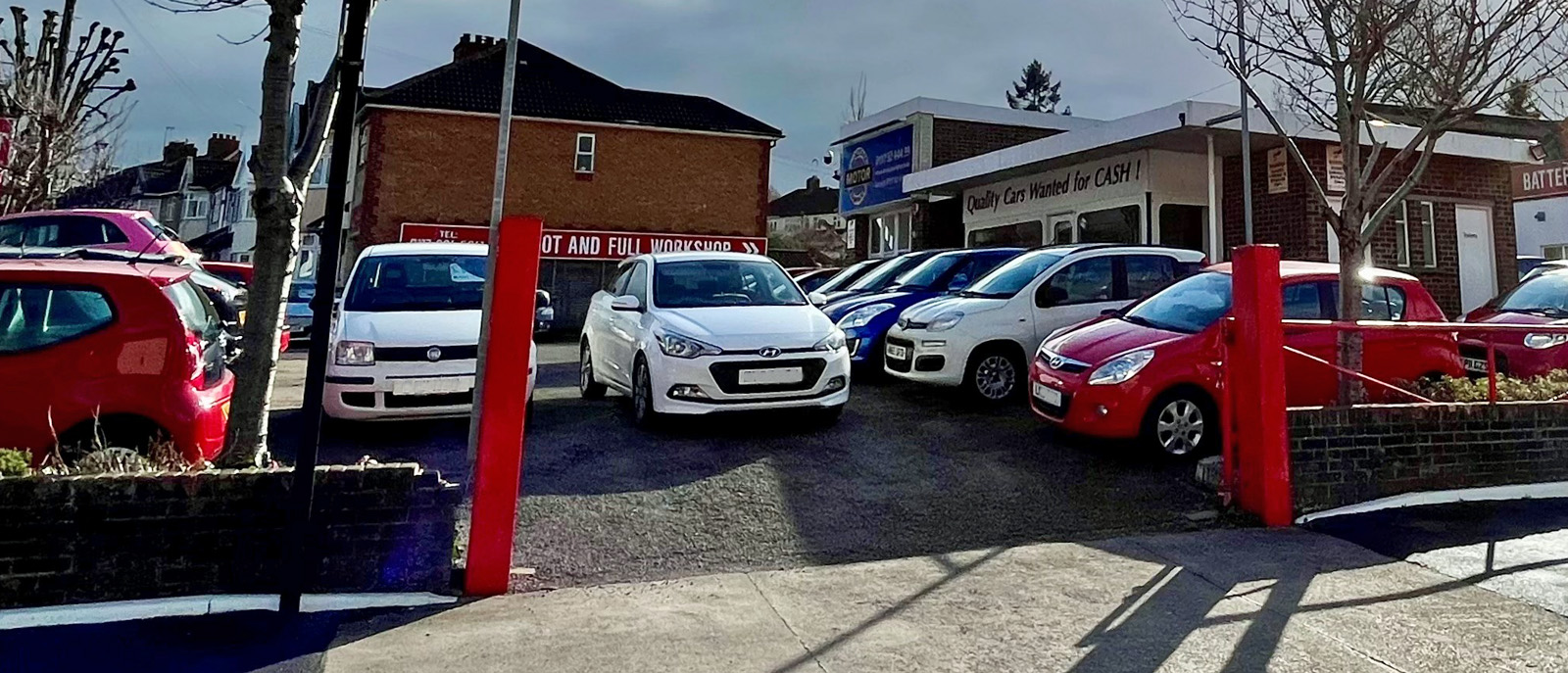 Prices of used fully electric cars (EVs) are falling in the UK, even though prices of used internal combustion engine (ICE) cars are rising. According to Auto Trader (see the first two articles below), in February 2023 the average price of used petrol cars rose by 3.3% compared with January and the price of used diesel cars rose by 1.4%. But the price of used EVs fell by 9.1%. This follows a fall of 2.1% in January.
Prices of used fully electric cars (EVs) are falling in the UK, even though prices of used internal combustion engine (ICE) cars are rising. According to Auto Trader (see the first two articles below), in February 2023 the average price of used petrol cars rose by 3.3% compared with January and the price of used diesel cars rose by 1.4%. But the price of used EVs fell by 9.1%. This follows a fall of 2.1% in January.
But why are used EV prices falling? After all, the last few years has seen a drive to replace ICEs with EVs and hybrids, with many consumers preferring electric cars to petrol and diesel ones. What is more, vehicle excise duty is currently zero for EVs (and will be until 2025) and the sale of new ICEs will be banned from the end of the decade. The answer lies in demand and supply.
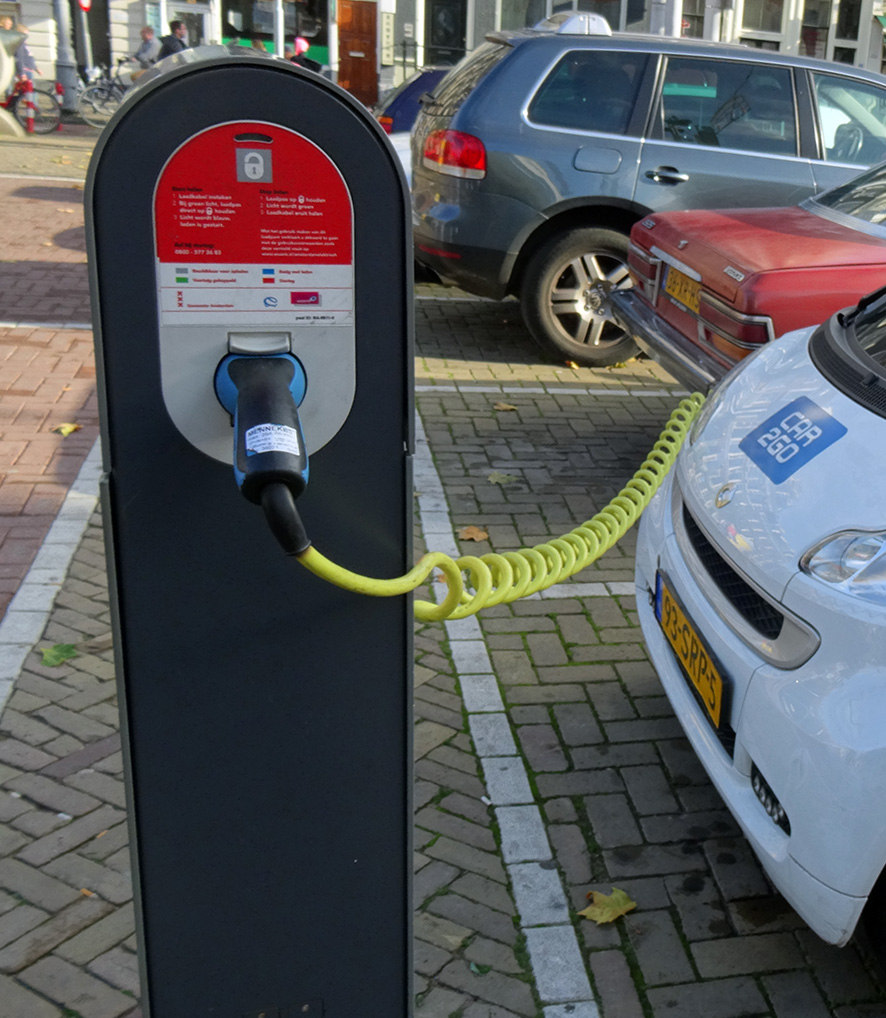 On the demand side, many existing and potential EV owners worry about the charging infrastructure. The number of EVs has grown more rapidly than the number of charging points. In 2020 there was one charging point per 16 cars; by 2022 this had worsened to one per 30 cars. Also the distribution of charging points is patchy and there is a lack of rapid and ultra-rapid chargers. Increasingly, people have to queue for access to a charger and this can substantially delay a journey and could mean missed appointments. There were many pictures in the media around Christmas of long queues for chargers at service stations and supermarkets. Poor charging infrastructure can be more of a problem for second-hand EVs, which tend to have a smaller range.
On the demand side, many existing and potential EV owners worry about the charging infrastructure. The number of EVs has grown more rapidly than the number of charging points. In 2020 there was one charging point per 16 cars; by 2022 this had worsened to one per 30 cars. Also the distribution of charging points is patchy and there is a lack of rapid and ultra-rapid chargers. Increasingly, people have to queue for access to a charger and this can substantially delay a journey and could mean missed appointments. There were many pictures in the media around Christmas of long queues for chargers at service stations and supermarkets. Poor charging infrastructure can be more of a problem for second-hand EVs, which tend to have a smaller range.
Also on the demand side is the price of fuel. After the Russian invasion of Ukraine and the rise in oil prices, the price of petrol and diesel soared. This increased the cost of running ICE vehicles and boosted the demand for EVs. But the war also drove up the price of natural gas and this price largely determines the wholesale price of electricity. With government subsidies for electricity, this constrained the rise in electricity prices. This made running an EV for a time comparatively cheaper. 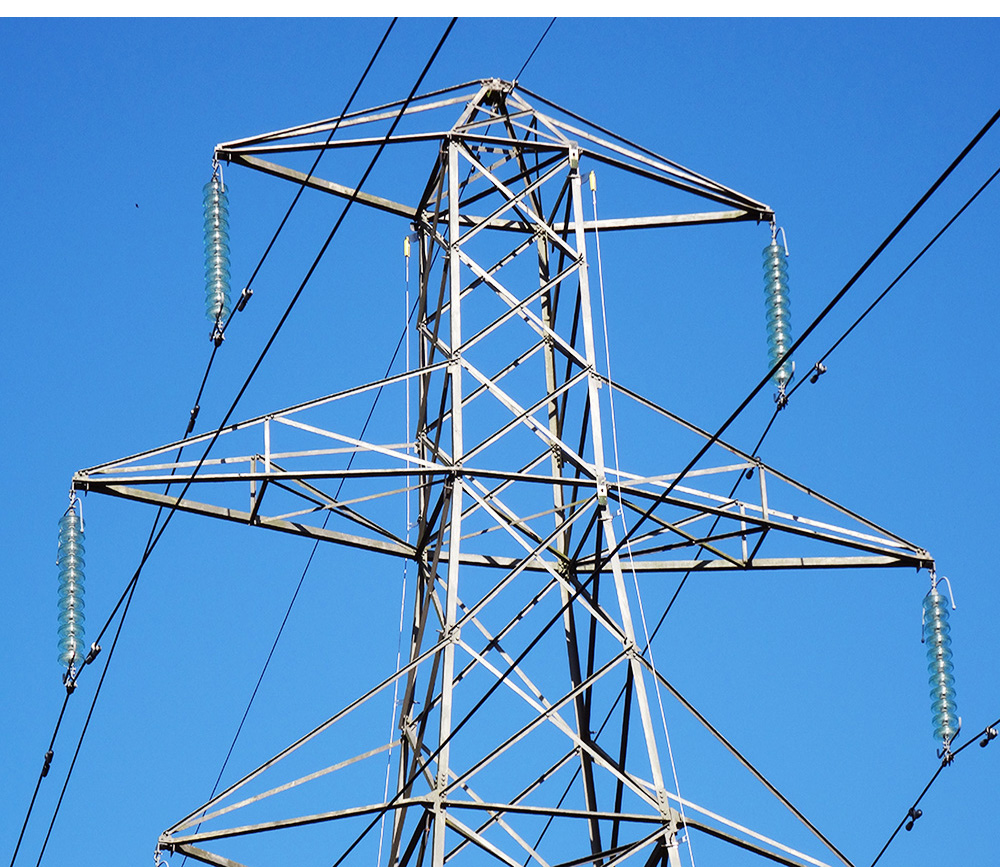 More recently, the price of oil has fallen and with it the price of petrol and diesel. But electricity prices are set to rise in April as government subsidies cease. The cost advantage of running an electric car is likely to disappear, or at least substantially decline.
More recently, the price of oil has fallen and with it the price of petrol and diesel. But electricity prices are set to rise in April as government subsidies cease. The cost advantage of running an electric car is likely to disappear, or at least substantially decline.
Another substitute for second-hand EVs is new EVs. As the range of new EVs increases, then anyone thinking about buying an EV may be more tempted to buy a new one rather than a used one. Such demand has also been driven by Tesla’s decision to cut the UK prices of many of it models by between 10% and 13%.
The fall in demand for used EVs is compounded, at least in the short term, by speculation. People thinking of trading in their ICE or hybrid car for a fully electric one are likely to wait if they see prices falling. Why buy now if, by waiting, you could get the same model cheaper?
On the supply side, EV owners, faced with the infrastructure problems outlined above, are likely to sell their EV and buy an ICE or hybrid one instead. This increases the supply of used EVs. This is again compounded by speculation as people thinking of selling their EV do so as quickly as possible before price falls further.
In many other countries, there is much more rapid investment in charging infrastructure and/or subsidies for purchasing not only new but used EVs. This has prevented or limited the fall in price of used EVs.
Articles
- Auto Trader diagnoses used car sector’s ‘robust health’ after February value rise
AM-online, Tom Sharpe (20/2/23)
- Auto Trader: Used car prices UP AGAIN in February but EV prices continue to tumble
Car Dealer, James Baggott (20/2/23)
- Used electric car prices caught in vicious downward cycle as experts warn of trouble ahead
Car Dealer, James Baggott (13/2/23)
- Used EV market needs more support in Spring Budget, says Vehicle Remarketing Association
Car Dealer, Jack Williams (15/2/23)
- Middle classes cannot afford electric cars, warns Vauxhall owner
The Telegraph, Howard Mustoe (23/2/23)
- British drivers are hurtling towards the electric car cliff edge
The Telegraph on msn, Ben Marlow (23/2/23)
- Cars Drivers should be ‘cautious’ when buying a used EV before 2030 car ban – ‘still an issue!’
Express, Felix Reeves (12/2/23)
- Motorpoint revenues accelerate but dealership group issues profit warning as used electric car prices crash
This is Money, Camilla Canocchi (27/1/23)
- Tesla cuts prices by up to a fifth to boost demand
BBC News, Lucy Hooker (13/1/23)
Questions
- Draw a supply and demand diagram to illustrate what has been happening in the market for used EVs.
- How has the price elasticity of (a) demand and (b) supply affected the amount by which used EV prices have fallen?
- Identify substitutes and complements for used electric vehicles. How relevant is the cross-price elasticity of demand for these complements and substitutes in determining price changes of used EVs?
- Draw a diagram to illustrate the effect of speculation on used EV prices.
- What is likely to happen to used EV prices in the months ahead? Explain.
- How are externalities in car usage relevant to government action to influence the market for EVs? What should determine the size of this intervention?
- Devise a short survey for people thinking of buying an EV to determine the factors that are likely to affect their decision to buy one and, if so, whether to buy a new or used one.
 Tickets for Beyonce’s 2023 UK Renaissance tour went on general sale via Ticketmaster’s website at 10am on Tuesday 7 February. Throughout the day, social media were full of messages from fans complaining about technical issues, long online queues and rising prices. This is not the first time this has happened. Similar complaints were made in 2022 when tickets went on sale for tours by Bruce Springsteen, Harry Styles and Taylor Swift.
Tickets for Beyonce’s 2023 UK Renaissance tour went on general sale via Ticketmaster’s website at 10am on Tuesday 7 February. Throughout the day, social media were full of messages from fans complaining about technical issues, long online queues and rising prices. This is not the first time this has happened. Similar complaints were made in 2022 when tickets went on sale for tours by Bruce Springsteen, Harry Styles and Taylor Swift.
With the general sale of tickets for Beyonce’s tour, many fans complained they were waiting in online queues of over 500 000 people. Others reported their frustration with continually receiving ‘403 error’ messages.
Market dominance
In November 2022, Ticketmaster’s website in the USA constantly crashed during the pre-sale of tickets for Taylor Swift’s tour. This led to the general sale of tickets being cancelled.
In response to the public anger that followed this decision, the Senate’s antitrust subcommittee organised a hearing with the title – ‘That’s The Ticket: Promoting Competition and Protecting Competition and Protecting Consumers in Live Entertainment.’
Senator Amy Klobuchar, the Chair of this committee, stated that
The issues within America’s ticketing industry were made painfully obvious when Ticketmaster’s website failed hundreds of thousands of fans hoping to purchase tickets for Taylor Swift’s new tour, but these problems are not new. For too long, consumers have faced long waits and website failures, and Ticketmaster’s dominant market position means the company faces inadequate pressure to innovate and improve.
Ticketmaster merged with Live Nation in 2010 to become the largest business in the primary ticket market for live music events. Some people have accused the firm of abusing its dominant market position by failing to invest enough money in its website, so leading to poor customer service.
Dynamic pricing
 Fans have also been complaining about the system of dynamic pricing that Ticketmaster now uses for big live events. What exactly is dynamic pricing?
Fans have also been complaining about the system of dynamic pricing that Ticketmaster now uses for big live events. What exactly is dynamic pricing?
Firms with market power often adjust their prices in response to changing market conditions. For example, if a business experiences significant increases in demand for its products in one quarter/year it may respond by raising prices in the following quarter/year.
With dynamic pricing, these price changes take place over much shorter time periods: i.e. within minutes. For example, in one media report, a Harry Styles fan placed £155 tickets in their basket for a concert at Wembley stadium. When the same fan then tried to purchase the tickets, Ticketmaster’s website sent a message stating that they were no longer available. However, in reality they were still available but for £386 – the price had instantly jumped because of high demand. Continually monitoring market conditions and responding to changes so quickly requires the use of specialist software and sophisticated algorithms.
Arguments for dynamic pricing
With ticket sales taking place months/years in advance of most live events, it is difficult for artists/promotors to predict future levels of demand. Given this uncertainty and the importance for the artist of playing in front of a full venue, event organisers may err on the side of caution when pricing tickets.
If the demand for tickets proves to be much stronger than initially forecast, then resellers in the secondary market can take advantage of the situation and make significant amounts of money. Dynamic pricing enables sellers in the primary market, such as Ticketmaster, to adjust to market conditions and so limits the opportunities of resale for a profit.
Ticketmaster argues that without dynamic pricing, artists will miss out on large amounts of revenue that will go to re-sellers instead. A spokesperson for the company stated that
Over the past few years, artists have lost money to resellers who have no investment in the event going well. As such event organisers have looked to market-based pricing to recapture that lost revenue.
Critics have claimed that Ticketmaster’s use of dynamic pricing is simply an example of price gouging.
No doubt the controversy over the sale of tickets for live music events will continue in the future.
Articles
- Beyoncé tour: UK fans snap up tickets despite Ticketmaster glitches
BBC News, Ian Youngs (7/2/23)
- Beyoncé Fans Are Going to Extreme Lengths to Secure Renaissance Tour Tickets
Time, Mariah Espada (10/2/23)
- Live music: How buying concert tickets could be made better
BBC News, Mark Savage (26/1/23)
- Ticketmaster demand-based pricing system criticised
BBC News, Annabel Rackham (10/10/22)
- Did Ticketmaster’s Market Dominance Fuel the Chaos for Swifties?
Yale Insights, Florian Ederer (23/11/22)
 Taylor Swift ticket sale problems spark widespread criticism of Ticketmaster
Taylor Swift ticket sale problems spark widespread criticism of TicketmasterPBS NewsHour on YouTube, Diana Moss and John Yang (17/11/22)
- Springsteen tickets are going for a whopping $4,000 – what else are we paying dynamic prices for?
The Guardian, Arwa Mahdawi (27/7/22)
- Will the Taylor Swift-Ticketmaster Senate Hearing Actually Change Anything?
Variety, Dean Budnick (1/2/23)
- Beyonce fans scramble for Renaissance tickets as sellers warn availability is already ‘extremely limited’
Sky News, Bethany Minelle (3/2/23)
Questions
- Explain the difference between the primary and secondary market for ticket sales for live events.
- Draw a demand and supply diagram to illustrate the primary market for tickets. Using this diagram explain how below market clearing prices in the primary market enable re-sellers to make money in the secondary market.
- What are the limitations of using demand and supply diagrams to analyse the primary market for tickets?
- Who has the greater market power – Ticketmaster or artists such as Taylor Swift and Beyonce?
- Try to provide a precise definition of the term ‘price gouging’.
- What other sectors commonly use dynamic pricing?
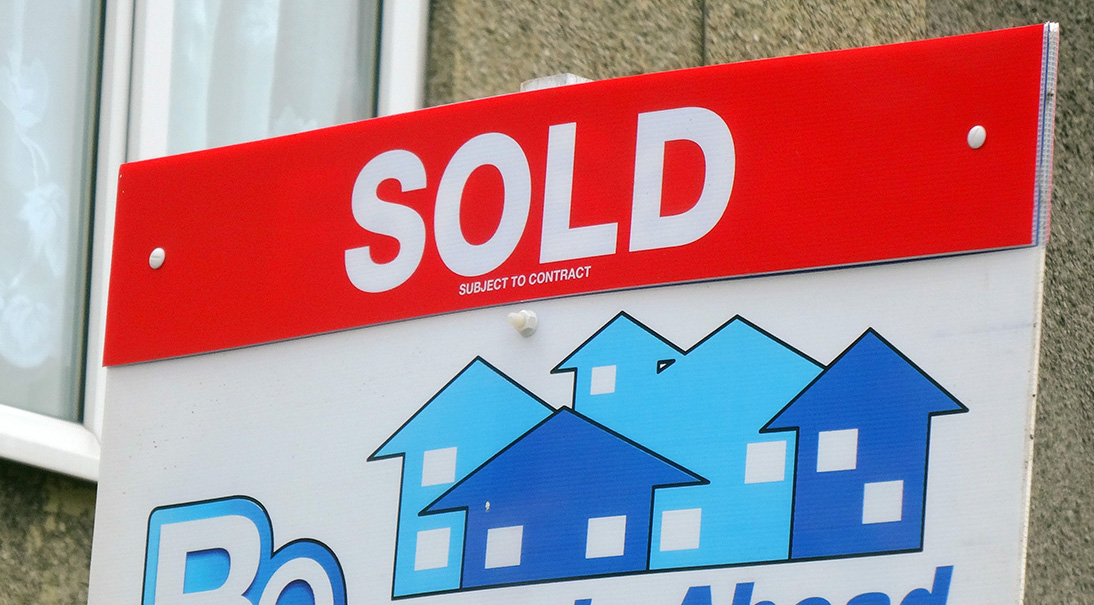 In July this year, the UK saw the highest annual house price inflation rate since May 2003. The housing market is experiencing an excess demand for houses. There is a greater demand from buyers than there are homes for sale. This has led to a double-digit annual rise for the 10th consecutive month. Nationwide building society data show that UK house prices rose by 10% in the year to August 2022, with the typical property price rising by £50 000 in the past two years to £273 751.
In July this year, the UK saw the highest annual house price inflation rate since May 2003. The housing market is experiencing an excess demand for houses. There is a greater demand from buyers than there are homes for sale. This has led to a double-digit annual rise for the 10th consecutive month. Nationwide building society data show that UK house prices rose by 10% in the year to August 2022, with the typical property price rising by £50 000 in the past two years to £273 751.
The market has seen this continued growth in house prices despite the growing pressure on buyers’ budgets. It is even reported that estate agents are seeing a recent surge in activity. However, can the housing market continue to grow, or will we witness a crash?
House market activity
There are also signs that the housing market is now losing some momentum. According to the Nationwide, the average price of a home was £294 260 in August, 0.4% higher than the previous month. Although this marked another record high, the rise was less than earlier in the year. Halifax called the monthly rise ‘relatively modest’ compared with the rapid house price inflation that has been seen in recent times, where the average monthly increase in house prices has been 0.9%. The latest increase marked a return to growth for house prices, after they fell in July for the first time in more than a year.
However, the annual growth did slow in August, despite house prices still growing. The annual rate of house price growth dropped to 11.5% from 11.8% in July – the lowest level in three months. The Nationwide is predicting that an increase in energy costs and rising mortgage interest rates will add to the pressure on household budgets in the coming months. Energy prices are continually rising, and it is suggested that the least energy-efficient properties could typically see bills surge by £2700 a year, or £225 a month. This added squeeze on households’ disposable income, combined with the expectation that that inflation is set to remain in double digits into next year, is predicted to slow house price increases further or even cause them to fall.
Barratt Developments, the country’s biggest housebuilder, stated that the number of homes reserved each week until the end of August had fallen below the level of a year earlier, and was now lower than before the coronavirus pandemic. This has been partly driven by people anticipating further rises in interest rates and provides further evidence of a slowdown in the housing market.
Bank of England decisions on interest rates
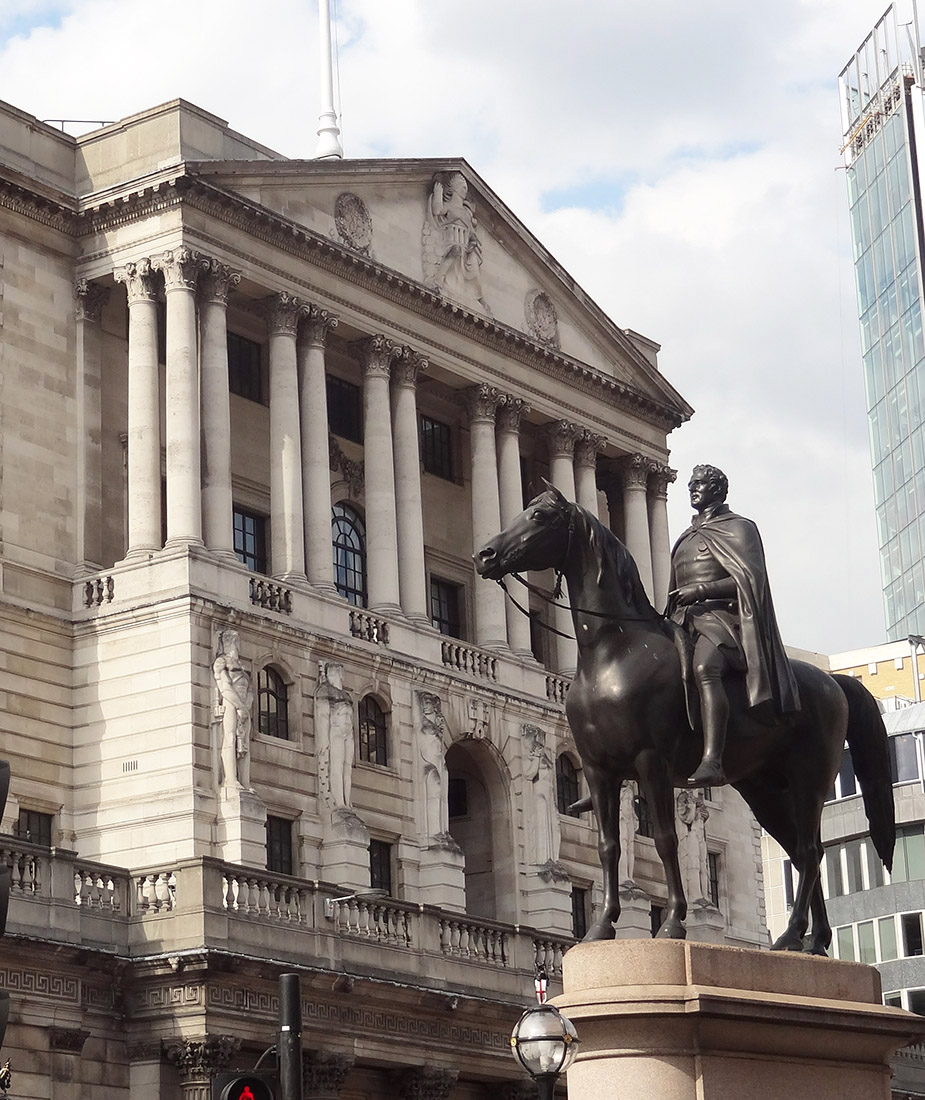 In early August, the Bank of England announced its biggest increase in interest rates in 27 years, taking the UK base rate from 1.25% to 1.75%, a 13-year high. This rise in the base rate, which has a knock-on effect on other interest rates, was an attempt to control rising inflation as energy and food prices soared.
In early August, the Bank of England announced its biggest increase in interest rates in 27 years, taking the UK base rate from 1.25% to 1.75%, a 13-year high. This rise in the base rate, which has a knock-on effect on other interest rates, was an attempt to control rising inflation as energy and food prices soared.
Then, on Thursday 22nd September, the Bank of England announced a further 0.5 percentage point rise in the base rate to 2.25%. This is now the highest level for 14 years, but this is unlikely to be the peak as it is expected that the Bank will continue raising rates into next year.
The government’s mini-Budget on 23 September involved a price cap on energy prices, estimated to cost around £150 billion, and various tax cuts. The package would be funded largely by borrowing. This is likely to drive interest rates up further. Indeed, in response to the package, the interest rate on new government bonds soared and price of existing bonds (which pay a fixed amount per annum) correspondingly fell, thereby increasing their yield. Yields rose above 4%; they were just 1.3% rate at the start of the year.
These further increases in interest rates will have a negative impact on the market as they feed through to mortgage rates, which have already increased noticeably recently. Indeed, following the mini-Budget and the rise in bond prices, around half the mortgage products on offer to new buyers or those re-mortgaging were withdrawn. Many households with mortgages will thus see their costs rise. Experts have warned that borrowers in the UK are especially exposed, with many people having mortgages tracking central bank rates or having short-term fixed deals set to expire. Those on fixed-rate deals will not be immediately affected, although their costs could jump when their deals come up for renewal.
The impact of a recession
Even though the housing market is slowing, it is nowhere near a crash. But, with the Bank of England predicting a recession, there is concern about the impact on the housing market. In August, the Bank had warned that Britain was likely to enter into a recession by December this year and predicted it to last 15 months. However, with the announcement of higher interest rates, the Bank now warns that the UK may already be in a recession. The central bank had previously expected the economy to grow between July and September, but it now believes it will have shrunk by 0.1%. This comes after the economy already shrank slightly between April and June.
A recession is defined as when an economy shrinks for two consecutive quarters. During a recession, house prices typically flatline or decrease but it all depends on how severe the recession is. Historically, when there is a deep and prolonged contraction in the economy with rising unemployment, house prices tend to fall.
Finance experts have predicted that the UK will suffer its longest downturn since the 2008 financial crisis. The global financial crisis saw the availability of mortgage finance contract, making it much harder for people to borrow, thereby reducing the demand for homes. This, together with rising unemployment, resulted in average house prices falling by 12%. It was not until 2010 that the housing market in London began to recover and not until 2013 in the wider UK market.
The BoE’s Monetary Policy Committee (MPC) have warned:
Real household post-tax income is projected to fall sharply in 2022 and 2023, while consumption growth turns negative.
This will be the first recession in the UK since the height of the Covid crisis 2020. However, then the housing market didn’t behave in the typical way and property prices continued rising. This was fuelled by people working from home, which encouraged both house movers and first-time buyers to seek houses with sufficient space. The housing market has been rampant ever since as people have taken advantage of low interest rates and also of the stamp duty holiday between July 2020 and September 2021 (see the blog, The red hot housing market).
This time, however, the predicted recession could finally put the brakes on growing house prices as people’s real incomes fall. With people faced with higher mortgage rates and the cost-of-living squeeze, the growth in demand for property is likely to slow rapidly: to 5% in the second half of this year and then lower still in 2023. This could eventually match the supply of property. Supply may also increase as a result of an increase in repossessions as people struggle to pay their monthly mortgage bills.
Cuts to stamp duty
In his mini-Budget on 23 September, the new Chancellor, Kwasi Kwarteng, announced that stamp duty on house purchases would be cut. The threshold at which buyers have to start paying the duty would rise from £125 000 to £250 000 and first-time buyers would not pay any duty on the first £425 000.
This cut in tax on house purchase will go some way to offsetting the effect of rising mortgage interest rates and is likely to reduce the slowdown in house price rises.
First time buyers
A recession could actually help some people climb onto the property ladder if it pushes property prices down. That would lead to smaller deposits being needed and lower total amounts having to be borrowed.
 However, despite the prospect of falling house prices, it still remains tough for first-time buyers. The biggest risk for hopeful homebuyers in a recession is losing their job. At a time of increased uncertainty, some first-time buyers are likely to wait, hoping that homes will become cheaper. However, there have only been 31 months in the past 20 years when house prices have fallen, all of which occurred between 2008 and 2012. Myron Jobson, senior personal finance analyst at Interactive Investor said:
However, despite the prospect of falling house prices, it still remains tough for first-time buyers. The biggest risk for hopeful homebuyers in a recession is losing their job. At a time of increased uncertainty, some first-time buyers are likely to wait, hoping that homes will become cheaper. However, there have only been 31 months in the past 20 years when house prices have fallen, all of which occurred between 2008 and 2012. Myron Jobson, senior personal finance analyst at Interactive Investor said:
Fast-rising rents are not offering any relief and could keep some buyers in the hunt for a home for longer than they would like.
Also, prices are not yet actually falling, even though demand is slowing. Demand for homes is still outstripping the available housing inventory. This means that the market is still a difficult one for first-time buyers and those looking to climb up the property ladder.
At first sight, it may seem that cuts to stamp duty will help first-time buyers, especially as the duty is paid after a higher threshold than for other purchasers. However, the stamp duty cuts will stimulate demand, which, as we argued above, will reduce the slowdown in house price rises. Also, despite the threshold being higher for first-time buyers, by stimulating house price inflation, most if not all the gains in the duty cut could be offset and could risk pricing-out first-time buyers.
Conclusion
The economic outlook is uncertain. However, the rises in the energy price cap in October and beyond, and the general rise on the cost of living as prices rise faster than wages, are expected to increase pressure on household finances, which will limit the amount that prospective house buyers can afford to borrow. As a result, house price inflation is expected to fall across the majority of UK regions, as buyer demand eases. But just how much house price inflation will fall and whether it will turn negative (i.e. a fall in house prices) is hard to predict
Articles
- House price growth at 10% a year despite squeeze on finances
BBC News, Kevin Peachey (1/9/22)
- How will a recession hit the UK housing market?
BBC News, Simon Read (5/8/22)
- Could the UK see interest rates rise to 5%?
BBC News, Faisal Islam (22/9/22)
- UK may already be in recession – Bank of England
BBC News, Dearbail Jordan & Daniel Thomas (22/9/22)
- Mortgage rates: act fast as increases loom
Financial Times, James Pickford (16/9/22)
- Who escapes the great mortgage reset?
Financial Times, Tom Braithwaite (16/9/22)
- UK house prices: Halifax and Barratt warn of challenges ahead
The Guardian, Joanna Partridge (7/9/22)
- Annual rate of UK house price growth doubles to 15.5% in one month
The Guardian, Rupert Jones (14/9/22)
- After an autumn flurry, is the UK housing market going to fall at last?
The Observer, Julia Kollewe (17/9/22)
- Stamp duty cut will benefit UK’s wealthier and raise inflation, say experts
The Guardian, Richard Partington (21/9/22)
- What does Kwarteng’s stamp duty cut mean for UK homebuyers?
The Guardian, Jess Clark (23/9/22)
- What happens to house prices in a recession? A property expert explains
Metro, Jack Slater (13/8/22)
Questions
- With the aid of a diagram, explain the current demand and supply in the housing market.
- How does an expectation of a rise in interest rates affect the demand for housing?
- Define the term recession. Why is the UK likely to enter recession (if it has not already done so)?
- Describe the characteristics of the business cycle during a recession.
- How do expectations of house price increases affect actual house price increases?
 UK house prices have been falling in recent months. According to the Nationwide Building Society, average UK house prices in September 2023 were 5.3% lower than in September 2022. This fall reflects the increasing cost of owning a home as mortgage rates have risen. The average standard variable rate mortgage was 3.61% in August 2021, 4.88% in August 2022 and 7.85% in August 2023. A two-year fixed rate mortgage with a 10% deposit had an interest rate of 2.48% in August 2021, 3.93% in August 2022 and 6.59% in August 2023. Thus over two years, mortgage rates have more than doubled. This has made house purchase less affordable and has dampened demand.
UK house prices have been falling in recent months. According to the Nationwide Building Society, average UK house prices in September 2023 were 5.3% lower than in September 2022. This fall reflects the increasing cost of owning a home as mortgage rates have risen. The average standard variable rate mortgage was 3.61% in August 2021, 4.88% in August 2022 and 7.85% in August 2023. A two-year fixed rate mortgage with a 10% deposit had an interest rate of 2.48% in August 2021, 3.93% in August 2022 and 6.59% in August 2023. Thus over two years, mortgage rates have more than doubled. This has made house purchase less affordable and has dampened demand. The first is that 74% of borrowers are on fixed-rate mortgages and 96% of new mortgages since 2019 have been at fixed rates. More than half of people with fixed rates have not yet had to renew their mortgage since interest rates began rising in December 2021. These people, therefore, have not yet been affected by the rise in mortgage interest rates.
The first is that 74% of borrowers are on fixed-rate mortgages and 96% of new mortgages since 2019 have been at fixed rates. More than half of people with fixed rates have not yet had to renew their mortgage since interest rates began rising in December 2021. These people, therefore, have not yet been affected by the rise in mortgage interest rates.  So will house prices continue to fall and will the rate of decline accelerate? This depends on confidence and affordability. With interest rates falling, confidence and affordability are likely to rise. This will help to arrest further price falls.
So will house prices continue to fall and will the rate of decline accelerate? This depends on confidence and affordability. With interest rates falling, confidence and affordability are likely to rise. This will help to arrest further price falls. China has been an economic powerhouse in recent decades – a powerhouse that has helped to drive the world economy through trade and both inward and outward investment. At the same time, its low-priced exports have helped to dampen world inflation. But is all this changing? Is China, to use President Biden’s words, a ‘ticking time bomb’?
China has been an economic powerhouse in recent decades – a powerhouse that has helped to drive the world economy through trade and both inward and outward investment. At the same time, its low-priced exports have helped to dampen world inflation. But is all this changing? Is China, to use President Biden’s words, a ‘ticking time bomb’? One of the biggest worries for the Chinese economy is the property market. The annual rate of property investment fell by 20.6% in June this year and
One of the biggest worries for the Chinese economy is the property market. The annual rate of property investment fell by 20.6% in June this year and  The fall in demand has caused consumer prices to fall. In the year to July 2023, they fell by 0.3%. Even though core inflation is still positive (0.8%), the likelihood of price reductions in the near future discourages spending as people hold back, waiting for prices to fall further. This further dampens the economy. This is a problem that was experienced in Japan over many years.
The fall in demand has caused consumer prices to fall. In the year to July 2023, they fell by 0.3%. Even though core inflation is still positive (0.8%), the likelihood of price reductions in the near future discourages spending as people hold back, waiting for prices to fall further. This further dampens the economy. This is a problem that was experienced in Japan over many years. Prices of used fully electric cars (EVs) are falling in the UK, even though prices of used internal combustion engine (ICE) cars are rising. According to Auto Trader (see the first two articles below), in February 2023 the average price of used petrol cars rose by 3.3% compared with January and the price of used diesel cars rose by 1.4%. But the price of used EVs fell by 9.1%. This follows a fall of 2.1% in January.
Prices of used fully electric cars (EVs) are falling in the UK, even though prices of used internal combustion engine (ICE) cars are rising. According to Auto Trader (see the first two articles below), in February 2023 the average price of used petrol cars rose by 3.3% compared with January and the price of used diesel cars rose by 1.4%. But the price of used EVs fell by 9.1%. This follows a fall of 2.1% in January. On the demand side, many existing and potential EV owners worry about the charging infrastructure. The number of EVs has grown more rapidly than the number of charging points. In 2020 there was one charging point per 16 cars; by 2022 this had worsened to one per 30 cars. Also the distribution of charging points is patchy and there is a lack of rapid and ultra-rapid chargers. Increasingly, people have to queue for access to a charger and this can substantially delay a journey and could mean missed appointments. There were many pictures in the media around Christmas of long queues for chargers at service stations and supermarkets. Poor charging infrastructure can be more of a problem for second-hand EVs, which tend to have a smaller range.
On the demand side, many existing and potential EV owners worry about the charging infrastructure. The number of EVs has grown more rapidly than the number of charging points. In 2020 there was one charging point per 16 cars; by 2022 this had worsened to one per 30 cars. Also the distribution of charging points is patchy and there is a lack of rapid and ultra-rapid chargers. Increasingly, people have to queue for access to a charger and this can substantially delay a journey and could mean missed appointments. There were many pictures in the media around Christmas of long queues for chargers at service stations and supermarkets. Poor charging infrastructure can be more of a problem for second-hand EVs, which tend to have a smaller range. More recently, the price of oil has fallen and with it the price of petrol and diesel. But electricity prices are set to rise in April as government subsidies cease. The cost advantage of running an electric car is likely to disappear, or at least substantially decline.
More recently, the price of oil has fallen and with it the price of petrol and diesel. But electricity prices are set to rise in April as government subsidies cease. The cost advantage of running an electric car is likely to disappear, or at least substantially decline. Tickets for Beyonce’s 2023 UK Renaissance tour went on general sale via Ticketmaster’s website at 10am on Tuesday 7 February. Throughout the day, social media were full of messages from fans complaining about technical issues, long online queues and rising prices. This is not the first time this has happened. Similar complaints were made in 2022 when tickets went on sale for tours by Bruce Springsteen, Harry Styles and Taylor Swift.
Tickets for Beyonce’s 2023 UK Renaissance tour went on general sale via Ticketmaster’s website at 10am on Tuesday 7 February. Throughout the day, social media were full of messages from fans complaining about technical issues, long online queues and rising prices. This is not the first time this has happened. Similar complaints were made in 2022 when tickets went on sale for tours by Bruce Springsteen, Harry Styles and Taylor Swift. Fans have also been complaining about the system of dynamic pricing that Ticketmaster now uses for big live events. What exactly is dynamic pricing?
Fans have also been complaining about the system of dynamic pricing that Ticketmaster now uses for big live events. What exactly is dynamic pricing?
 In July this year, the UK saw the highest annual house price inflation rate since May 2003. The housing market is experiencing an excess demand for houses. There is a greater demand from buyers than there are homes for sale. This has led to a double-digit annual rise for the 10th consecutive month. Nationwide building society data show that UK house prices rose by 10% in the year to August 2022, with the typical property price rising by £50 000 in the past two years to £273 751.
In July this year, the UK saw the highest annual house price inflation rate since May 2003. The housing market is experiencing an excess demand for houses. There is a greater demand from buyers than there are homes for sale. This has led to a double-digit annual rise for the 10th consecutive month. Nationwide building society data show that UK house prices rose by 10% in the year to August 2022, with the typical property price rising by £50 000 in the past two years to £273 751. In early August, the Bank of England announced its biggest increase in interest rates in 27 years, taking the UK base rate from 1.25% to 1.75%, a 13-year high. This rise in the base rate, which has a knock-on effect on other interest rates, was an attempt to control rising inflation as energy and food prices soared.
In early August, the Bank of England announced its biggest increase in interest rates in 27 years, taking the UK base rate from 1.25% to 1.75%, a 13-year high. This rise in the base rate, which has a knock-on effect on other interest rates, was an attempt to control rising inflation as energy and food prices soared.  However, despite the prospect of falling house prices, it still remains tough for first-time buyers. The biggest risk for hopeful homebuyers in a recession is losing their job. At a time of increased uncertainty, some first-time buyers are likely to wait, hoping that homes will become cheaper. However, there have only been 31 months in the past 20 years when house prices have fallen, all of which occurred between 2008 and 2012. Myron Jobson, senior personal finance analyst at Interactive Investor said:
However, despite the prospect of falling house prices, it still remains tough for first-time buyers. The biggest risk for hopeful homebuyers in a recession is losing their job. At a time of increased uncertainty, some first-time buyers are likely to wait, hoping that homes will become cheaper. However, there have only been 31 months in the past 20 years when house prices have fallen, all of which occurred between 2008 and 2012. Myron Jobson, senior personal finance analyst at Interactive Investor said: